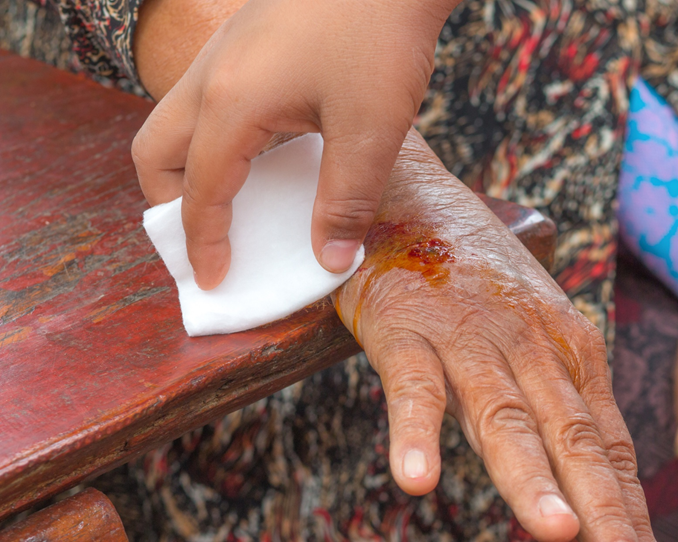Cuts and scrapes are common sights—but did you know that every open wound puts you at risk of life-threatening infections? Whether your wound is surgical or traumatic, simple or severe, bacteria can invade if you don’t clean it. In fact, even after a clean surgery, there’s an 8% infection rate in the general population.
Wound care should always be a priority. Keep reading to learn the proper way to clean a wound!
Why You Should Clean a Wound
There are two reasons you should clean every wound: to reduce the chance of infection and to accelerate the healing process. Wounds heal better and with less scarring when they are properly cleaned and bandaged.
For the best results, you should clean a wound and change the bandaging at least once a day until it is completely healed.
What You Need
Caring for an open wound requires these supplies:
- Soap and water
- A clean cloth or sterile gauze
- An antibiotic cream or ointment
- Bandages and medical tape
It’s also best to have disposable gloves, as these further reduce the risk of infection. In some cases, you may also need tweezers to remove any debris from around the wound.
If your first aid box is low on any of these essentials, it’s time to refill your kit! It’s important to keep it fully stocked so that you don’t end up scrambling when you really need it.
Steps to Clean a Wound
Cleaning an open wound is a six-step process. For the best results, you need to complete each step in the following order.
First, wash your hands to prevent an infection. Cover your hands with gloves for the best protection if you can.
Second, stop the bleeding. Using a cloth or gauze, apply gentle pressure until the bleeding stops.
Third, rinse with clean water to remove dirt and debris. Use tweezers around the wound if necessary, but sterilize them with alcohol first.
Fourth, apply an antibiotic cream or ointment. Then, you can bandage the wound to keep out germs and keep in moisture. Finally, watch for signs of infections like pain, swelling or redness, fever, or warm skin around the wound.
Cleaning cuts and scrapes is no big deal, but there are some cases when you need expert medical attention. For instance, if bleeding is severe, the wound is deep or gaping, or if it was caused by a bite or a dirty object, then you need more than first aid! Perform the first aid that you can, but visit a doctor as soon as possible.
Learn More About First Aid Today
Cleaning wounds is an essential part of first aid that minimizes the risk of serious infections. Make sure you know how to clean a wound so that you and your loved ones can stay safe. Keep learning about simple first aid to make sure you’re ready for anything.
Want extra tips on home care for open wounds and more? You’ll find dozens of helpful articles like this on the Health and Fitness page of this site! Check it out now.











